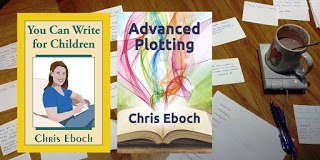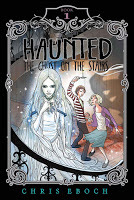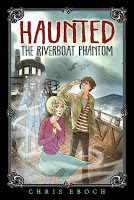Turning an Idea into a Story: Making Muscular Action! #writing #amwriting
 I'm interrupting the posts on goal setting to update this post, because I keep wanting to refer people to it when they ask how to expand their stories. So here's how to "Add meat to your manuscript," or how to develop your novels by increasing the action for a strong middle
I'm interrupting the posts on goal setting to update this post, because I keep wanting to refer people to it when they ask how to expand their stories. So here's how to "Add meat to your manuscript," or how to develop your novels by increasing the action for a strong middle “I love it,” the editor said. “I want to buy it.”
Words every writer wants to hear. But such joy does not come without a price. In this case, the editor followed those lovely phrases with “It needs to be twice as long.”
 But I already had a plot that worked, and a nice fast pace! All in ... uh ... just over 80 pages. So yeah, that was short, even for a children’s novel. And since I was pitching The Ghost on the Stairs as the first in a series, it had to match Aladdin’s series guidelines for ages 9 to 12. So I had to add 70 pages, while keeping the story fast and active.
But I already had a plot that worked, and a nice fast pace! All in ... uh ... just over 80 pages. So yeah, that was short, even for a children’s novel. And since I was pitching The Ghost on the Stairs as the first in a series, it had to match Aladdin’s series guidelines for ages 9 to 12. So I had to add 70 pages, while keeping the story fast and active.Some of you are going, “Yeah, right—I always need to cut, not expand.” That’s a common problem for many, but filling out a story with exciting, dramatic material can cause challenges as well—especially in the middle, where plots can sag and slow. I also see a lot of beginning children’s writers with manuscript in the 5000- to 20,000-word range, a tough sell unless you are doing leveled readers—which often have a very specific word count for each age level. Adult novelists may wind up with novellas, where a full-length novel would have better market opportunities.
So how do you build a bigger manuscript, while keeping it lean and muscular, not padded with fat descriptions or flabby repetition? I studied books on plotting, including Elements of Fiction Writing - Beginnings, Middles & Ends
 (Nancy Kress, Writers Digest Books) and came up with the several literary “protein shakes” to feed my novel.
(Nancy Kress, Writers Digest Books) and came up with the several literary “protein shakes” to feed my novel. Add More Plot
In my Haunted series, siblings Jon and Tania travel with their mother and stepfather’s ghost hunter TV show, and discover Tania can see ghosts. In each book, they have to figure out what’s keeping the ghost here, then try to help her or him move on. In the version of The Ghost on the Stairs I sent to the editor, people already knew the ghost’s name and why she’s stuck here grieving. To expand the manuscript, I made the ghost story more vague. Jon and Tania have to do detective work to discover her name and background.
Exercise: Make a plot outline of your manuscript, with a sentence or two describing what happens in each scene. How easily does your main character solve his problems? Can you make it more difficult, by requiring more steps or adding complications? Can you add complications to your complications, turning small steps into big challenges?
 Example: In Haunted Book 2: The Riverboat Phantom, a ghost grabs Jon.
Example: In Haunted Book 2: The Riverboat Phantom, a ghost grabs Jon.I felt the cold first on my arms, like icy vice grips squeezing my biceps. Then waves of cold flowed down to my hands, up to my shoulders, all through my body. I tried to breathe, but my chest felt too tight. My vision blurred, darkened. The last thing I saw was Tania’s horrified face. And I fell.
That’s dramatic enough for a chapter ending. So what’s next? It would be easiest—for Jon and the writer—if Tania is still the only one there when he recovers, and no one else notices his collapse. But if everyone notices, and Jon has to convince his worried mother that he’s not sick, you get complications.
See the "plotting" label to the right for more advice.
 Advanced Plotting has tons of advice on building strong plots. Get Advanced Plotting
Advanced Plotting has tons of advice on building strong plots. Get Advanced Plotting on Amazon in print or e-book.
on Amazon in print or e-book. Chris Eboch is the author of over 60 books for children, including nonfiction and fiction, early reader through teen. She is the author of You Can Write for Children: How to Write Great Stories, Articles, and Books for Kids and Teenagers, and Advanced Plotting. Learn more at https://chriseboch.com/ or her Amazon page. For critique rates, visit her website "For Writers" page.
Published on August 03, 2020 13:00
No comments have been added yet.



